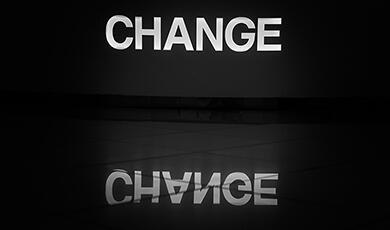London's Hospitals Today
Share
- Details
- Transcript
- Audio
- Downloads
- Extra Reading
This lecture looks at the way in which hospitals operate in modern day London. Such questions which are discussed are the conflicts between having a really good service for some conditions that are time critical, and having the service round the corner. The National Health Service has always tried to balance these alternative goods, but these balances can change over time.
Part of the Safeguarding London's Health, Monday's at One lecture series.
Other lectures in this series are:
Medieval Hospitals of London, by William Ayliffe FRCS PhD
The Origins of the NHS, by Professor Virginia Berridge
The Future of London's Hospitals, by Dr Patricia Oakley
Download Transcript
LONDON'S HOSPITALS TODAY
Geoffrey Rivett
Opening slide - Lancet quote.
"Things are not what they used to be" said the elderly man addressing Mr Punch." "They never were" Mr. Punch replied. So it is with London's Hospitals, they are in turmoil - but they ever were.
It is a great honour and pleasure to be invited to talk to this College, once described as England's third University. When Matthew Gwinne, the first Gresham Professor of Physic, was at St John's College Oxford, he was invited to deliver a lecture on music, apparently to improve his cash flow. He candidly acknowledged that this was a subject of which he was entirely ignorant. He got away with it, as would be expected from a man with the talent to become a Professor here, later Registrar and Censor at the College of Physicians, and who was a playwright and a physician, two occupations not so far removed as one might think.
In the first lecture of the series we heard from William Ayliffe of the many hospitals, small and large, that clustered in the middle of London. In the second Professor Virginia Berridge took us through the formation of the NHS. Now, we cone in on London again, and look at the present situation and I will leave enough time for discussion.
Slide (my background)
I have had three careers within medicine, as a family doctor, a medical civil servant in the Department of Health, and as a medical historian of the 19th Century to the present day, with a particular interest in London. I have written two books, one on London's hospital system and the other on the first 50 years of the NHS. Both are now available on internet at nhshistory.com. More locally, I am an Apothecary and Barber and am Vice-Chair of the Council of Governors of one of our local hospitals, the Homerton in Hackney. Today I am going to talk a little about where London's hospitals have come from, where they are now, and the environment in which they are functioning.
Slide
In the late 1970s my post in the Department of Health involved the organisation of hospitals and medical schools in London, which became an abiding interest. At that time David Owen, as Minister of Health, was spreading money across the NHS more equitably and London was losing out. Change in services was necessary and it was clear what an organisational mess things were. I looked at the historical roots of London's hospitals which led to the publication of my first book. It was an analysis of how our municipal, voluntary and fever hospitals had been created, and the gradual process which had formed them into a hospital system. This systematisation took place with the introduction of the NHS in 1948 and with the later incorporation of the teaching hospitals into the general structure in 1974. Time and again decisions were taken on a local basis and often for short term economic reasons creating problems in later years.
To see where we are now, we have to look back as well as forward for the hospitals are the outcome of the last two hundred years, driven by the rapid increase in the population, requiring new hospitals. Then, starting in the 1870s, there was a population flight from the centre, reducing the demand on central hospitals and increasing the need in the suburbs. Post-war re-housing policy was incredibly successful in that people moved further out, to the Basildons, the Harlows and the Croydons. Finally, changes in medical science affected hospital building. Specialisation demanded bigger hospitals of a different pattern. Wards took up 90% of a hospital in the 19th Century. Now less than half is wards, the rest departments for treatment, investigation and outpatient care.
As a result London has lost well over half the hospitals it had a century ago. What we now have is larger and more frenetic hospitals
Slide.
The Westminster Hospital thought that because it was the nearest one to Parliament, it would never be closed. It was, and the Chelsea and Westminster Hospital was built.
Slide
We have far fewer hospitals, for example the South London Hospital for Women is now a Tesco's and University College Hospitals London has made a bomb from selling the old Middlesex Hospital in Goodge Street.
Slide
The aims of hospitals have changed over the years and continue to change. Though old hospitals seldom had a mission statement, the early aims were salvation and care rather than cure, and the charitable feeding and clothing of the hungry and the stranger. Treatments might be spiritual as well as therapeutic for therapy often had little to offer. As a military surgeon said, "I dressed his wounds, and God healed him."
Slide
The 19th Century changed all that, and a doyen of hospital management defined the modern objective as curing with the smallest number of beds the greatest number of patients in the quickest possible time. Any modern management consultant would be proud of that statement. That is the world in which London's hospitals are operating today.
Slide
This aim was not entirely in kilter with hospitals that had such different traditions, religious and endowed such as St Thomas' and St Bartholomew's, from the charity of modern commerce (Guy's), charity for the poor, from academia that created hospitals to support their medical schools (UCH and King's), from the poor law and local authority services, from hospitals designed to cope with epidemics, and others later created by the NHS to fill gaps. Hospitals have always had a strong sense of their individuality which sits ill with a system paid for by a population that expects a personal service and is not overly concerned with the traditional feelings of a particular institution. Indeed a significant problem in the earliest years of the NHS was to establish some sort of ésprit de corps, and the voluntary hospital pattern was adopted, rather than the hierarchical system favoured by the local authorities.
Slide
This wide array of vested interests was brought together in 1938/9 by the emergency medical system that was organised like the slices of a cake. It was arranged this way because the calculations of the likely effect of German bombing, at a time when it was thought that the bomber always got through, suggested that the devastation would be as big as the later atomic explosions. Hospitals therefore had to be evacuated and each central hospital had peripheral sectors into which it could move. Outer hospitals were designated, enlarged and sometimes built from scratch. The radial pattern of this arrangement has cast long shadows. For example in the arrangement of medical education teaching hospitals taught in hospitals further out in their sector. In the reverse direction patients with serious illnesses were often referred from peripheral hospitals to central and more specialised ones.
Slide
If we define London as the area covered by its strategic health authority,Healthcare for London, we are speaking of over 7 million people living in 32 boroughs of widely differing characteristics. 32 NHS hospital trusts provide services, and general practice is a major player. Many patients are referred by their GPs, who therefore determine much of what the hospitals do and it is government policy to shift work from high cost hospitals into the lower cost primary care environment, where it is safe to do so.
Slide
All told, the hospitals now admit and treat some two million people a year. Very roughly about a third is emergency, about a third is day surgery and about a third is care for those over 65 years of age.
Slide
There are several drivers of change, money, changes in the population, in need, health and disease, changes in what medicine can do, and changes in our expectations
Slide.
Money
Money is always short. There is a limit to our willingness to be taxed; health is in competition with the military, Education, the Police and all the rest. London is in competition with the rest of the United Kingdom, and within London hospitals themselves compete. The route by which money comes to hospitals affects behaviour. Incentives work. Until fairly recently hospitals received a budget and then they, and the consultants in the hospitals, made up their own minds about how it was to be spent. There was almost a pact. Doctors accepted the money that government gave them to treat patients, and government thought it was not its role to second guess consultants. Doctors were the decision makes who treated the patients they chose, in the way they wished and in the doctor's order of priority. No more. Contracts are now geared to activity, and for at least a decade there has been a suspicion that doctors are not always Knights who are always altruistic, but can be Knaves who need to be watched and regulated.
Slide
London is atypical.
Over the years the central population rose and then fell dramatically. In recent years there has been a small increase again of some 5%. Half of adults are single, fewer than elsewhere in the country; we have fewer couples and more ethnic and religious diversity. The slide picks out some of the key differences between the metropolis and the rest of the country.
Pause while the slide is read
Slide
Changes in health and disease.
The conditions that the hospitals deal with have altered radically within living memory. Infections of childhood are now minimal. Tuberculosis has fallen dramatically, but with some recent increase as a result of immigration, commonly drug resistant. Appendicitis is far less common, as are perforating and bleeding peptic ulcers. But we have a rising birth rate and as a recent Gresham Professor of Physic pointed out; our life expectation is increasing so we have more of the diseases of ageing, of which cancer is one. Some are chronic and degenerative, for example arthritis of the hip and knee, often seen in people who have enjoyed sport and fitness regimes and, unlike me, have worn their joints out. There are diseases that have come with our most recent waves of immigration, sickle cell disease and heterosexual AIDS. Then there is the obesity story which is certain to cast long shadows.
Slide
What hospitals do depends crucially on what they can do.
People are not admitted if it is pointless. Until orthopaedic surgeons developed operations for arthritis of the hip, arthritics were not admitted. Before there were ways of stitching together the ligaments ruptured in skiing accidents, these young people were not on the wards. Developments in imaging, non-invasive surgery and genetic medicine alter the demands on hospitals. Now that cancer is often a chronic disease to be controlled, and not a death sentence, we have a new and costly demand upon the hospitals. And if treatment becomes less painful and time consuming, the demand increases. In the 19th Century the number of operations performed in London hospitals multiplied many times within a few months of the introduction of anaesthesia. Better care increases the demand for care. If treatment seems simple people are more eager to go under the knife, as in the case of cosmetic surgery.
Slide
Our expectations are for a longer life
We want perfect children and to have them when we want to have them - sometimes requiring hospital services for infertility and intensive care for the babies. Lifestyle medicine has an effect on the private sector, but the Homerton Hospital, a district hospital if ever there was one, has a department of bariatric surgery - operations for the morbidly obese. Prescribing drugs to try to control obesity has multiplied 8 fold in recent years. Instead of dying cheaply when young, we now have a number of costly chronic illnesses. That, over a lifetime means higher bills particularly in the last few months. And most of us wish to die at home, something that often does not happen, for a variety of reasons.
Slide
So London's hospitals have to meet the challenge of change. For a hundred years there have been regular attempts to redesign the system, and here are some of them. The Select Committee of the House of Lords, over 100 years ago, argued for reconfiguration. Their main success was the movement of King's College Hospital from near Aldwych. Since the last war and the coming of the NHS, reports have come thick and fast.
Slide long pause
The Daily Mail, in 1902, published a map showing where hospitals should move. The Mail showed how valuable some of the hospital sites were, and that the sale of the land would provide money for rebuilding in a more sensible place. Needless to say, heated correspondence followed not least from the Treasurer of St Bartholomew's who wrote to the Daily Mailthat the dense local population, the ever increasing workload, and the need for West End physicians and surgeons to be near at hand - impossible if the hospital moved to Battersea, Greenwich or Tottenham - made its present position absolutely necessary. 'No greater injury could be inflicted upon the sick and suffering poor of the City of London than to move it from the site where it has done incalculable good.'
long pause
Because of the continual change in hospitals, every so often a major review of hospitals has been launched. Some are about the distribution of hospitals, some about merger and closures, some are concerned with medical education and specialist services, but all are traumatic to those of us who like calm, and the status quo.
Slide
Key issues are effective clinical services, the right hospitals in the right places, clinical support for medical education and the basis for research and development on an international scale. Sometimes this means hospital centralisation. This is no new concept.
Slide
Bevan in his speech on the Second Reading of the NHS Bill in 1946 said "everybody knows today that if a hospital is to be efficient it must provide a number of specialised services. Although I am not myself a devotee of bigness for bigness sake, I would rather be kept alive in the efficient if cold altruism of a large hospital than expire in a gush of warm sympathy in a small one." The rather bleak photograph was taken in the Royal Free two weeks ago.
We all know that after a major accident there is a need to get people to a competent accident department rapidly. What is less appreciated is the development of treatment for conditions conventionally regarded as medical for which time is also of the essence. The best example is probably heart attack. Over the last 15 years the role of angioplasty, operation on the coronary arteries of the heart during the acute phase of a heart attack, has become increasingly important. As a result, when a London ambulance crew recognises that someone has an acute heart attack, perhaps by using an onboard cardiograph, they go directly to one of the few units that can undertake angioplasty and the insertion of a stent 24/7. For this area it is the London Chest Hospital and UCH. Stroke is more difficult because there is no good and quick way of diagnosing a stroke and CAT scanning or MRI is needed within three hours to make an accurate diagnosis before using clot busting drugs. The need for immediate care is therefore no longer restricted to trauma.
Slide
This is a quotation by a relative at a recent hospital meeting in the East End.
READ IT OUT
Slide
Why did they drive past Lewisham? For the reasons I have given, the need for specialised services available 24 hours a day, with complex equipment and well trained teams.
Slide
So we cannot have everything nearby.
There are conflicts between having a really good service for some conditions that are time critical, and having the service round the corner. The NHS has always tried to balance these alternative goods, but the balance can change over time.
There is a conflict between what the professionals think people need, and what people themselves think they need, when they often do not know the possibilities and risks. When healthy, why should one contemplate options for illnesses that may never happen?
How far should we force a better quality health care service on the people paying for it?
Slide
To have good care we need the right hospital in the right place. Many of us spend an hour or more travelling to work each day, so if our very life is under threat, isn't a journey of an hour reasonable if the quality of care when we arrive is going to make a difference? But if the illness is chronic and not life threatening and relatives need to visit frequently, easy access matters much more. This is particularly so in the last days of life.
Slide
People are often worried when the attempt is made to apply business principles to health, but this is inevitable when many billions of pounds are being spent. Market forces inevitably come into play. And it is not possible to provide a good service if the local demand is low. Practice may not make perfect, but it certainly makes better, and surgical teams are safer if they are active and practised. This can translate into a population base and you need a larger population for ophthalmology than maternity, and larger still for heart surgery.
Slide
Small hospitals have a problem. To have a consultant on duty round the clock one needs to have at least five consultants in that specialty on its staff. It is even worse when a team is needed, as in the case of cancer, with surgeons, radiologists and oncologists working together. Economies of scale are necessary.
Slide
The next need is to support medical education. While London does not have the near dominance that it used to have, we still do more than our national share of teaching. Any change to our hospitals impacts on medical education and the future, and not just care in the present.
Slide
Medical schools themselves have changed. London's erstwhile 12 schools each used to admit something between 50-100 students annually and everyone knew each other. They have amalgamated and got much larger. 50 years ago most students were white males whose father was a doctor. Now there are more Asian women students than British men. While outside London medical schools always developed as a part of a multi-faculty university that was not the case in London until after the Second World War. Medical schools were often no more than a wholly owned subsidiary of a great voluntary hospital, students qualifying with the non university diploma of the membership of the Royal College of Surgeons and the licentiateship of the Royal College of Physicians. An eminent consultant once asked "What has London University to do with medical education" Patients sometimes thought that the mass of letters after a doctor's name meant that he was excellently qualified. Those days of non-University diplomas are now over and more than 1600 students enter medical studies annually in London.
Slide
Currently we have 5 major groupings, as opposed to the12 medical schools in London at the end of the Second World War. Imperial College, University College, King's College, Queen Mary's College and Kingston University. Some would say that the status of the academic bodies with which these teaching hospitals are associated varies. This has an impact on the quality of the staff attracted, and the money that flows in research grants.
Slide -
Use of hospitals for teaching
Because British medical education has always been proud of the clinical teaching, medical schools have increasingly used facilities in other hospitals, generally within their old sector. This means appointing consultants who are good at teaching and accounts for the number of hospitals that include the words "University Hospital" in their title.
Slide
Research in hospitals
Over the last 150 years research has moved from a peripheral incidental activity, to an essential part of medicine. Starting with bacteriology and pathology, and now with the development of new drugs and exploration of how they work, research is key. The National Institute for Clinical Excellence depends on a research base. Treatment based on evidence is now a central demand of orthodox medicine. Progress up the medical tree depends in part upon having published, and hospitals without a research base attract a different type of senior staff.
Slide
This has been recognised in the establishment of a National Institute for Health Research. Five major biomedical research centres have been nominated, three in London. In addition there are smaller more specialised ones, and some of these are in London as well. Nomination as a centre of research excellence goes a long way to guaranteeing the future existence of the institution. Even hospitals that have not been centrally designated, such as the Royal London, have ambitions to make the list or achieve comparable status..
Slide
As Machiavelli knew, changing a system, however necessary, is risky.
I cannot lay out a plan for changes in today's hospitals in London. I was involved at a detailed level in such planning in the 1980s and there had been attempts before and since. Each time some changes have been achieved but the accomplishment has fallen well short of the plans of the optimists. Machiavelli had it right. He said that the opposition of the threatened was always more forceful than the support of those who might benefit, for people did not believe that plans would come to fruition.
Slide
What changes might be needed? Sometimes it is not only possible but right to move people's care out of hospital into the community. This has always happened. At one time diabetes was a hospital condition. Changes may involve new build, rebuilding, reshaping, merger and closure.
Slide
New building is increasingly common, and for the last 15 years has often been funded by public/private partnerships. While this system has provided money that would not have been available from the Treasury, it has been criticised because it undoubtedly increases the ultimate cost that the taxpayer bears. It is more efficient at creating the original building than at modifying it as needs change. Modifying Private Finance Initiative contracts is an expensive nightmare.
Slide
Not all rebuilding is beautiful
Slide
Sometimes new building is needed to replace necessary hospitals that are structurally out of date. Old hospitals are much loved but are often difficult to clean, to maintain and are functionally unsatisfactory. Often there is debate about the nature of the services it is sensible to provide, for example the years of argument about the redevelopment of St Bartholomew's and the Royal London. New hospital building is certainly needed, but where and for what purpose?
Slide
The tools used to achieve change include Bribery, where one digs deep into one's pockets to buy out the opposition as in the case of the Royal Free and St George's.
Slide
Brutality, when one enforces one's will. Revenue control is currently the favoured way of doing this. If, and this is a real example, a hospital wishes to undertake surgery for obesity, it is now within the rules for a primary care trust to state that it will choose where the surgery is to be undertaken.
Slide
Sometimes a hospital just becomes unviable. Kenneth Clarke, when Secretary of State for Health, said he would just love it if the reason for closing a hospital was that nobody was going there anyway. A century ago, when people were moving from central London to the suburbs, a number of central London hospitals closed or moved as the population fell. King's College Strand is a case in point, a combination of breakdown and bribery. With the fall in the population of central London, it was persuaded to move to Denmark Hill a century ago helped by money from the King's Fund.
Currently staffing problems may lead to substantial difficulties.
Slide
Enter Lord Darzi, an eminent surgeon high in the counsels of Labour, first knighted then ennobled. He follows in the pattern of other attempts to sort out London and one based on much professional consultation.
Slide
It is traditional, before prescribing nasty tasting medicine, to explain why it is needed. First there is an analysis of the problems. So Darzi published a report a year ago making the case for change.
Analyses are, like statistics, always suspect. In selecting the problems one biases a solution towards one's predetermined objective. As a professional I support his view that the form and pattern of London's hospitals should follow their function and be determined by what works best.
Such an approach was followed by Lord Dawson in 1920 whose solutions were rather like Lord Darzi's, right down to polyclinics. There are, however, traps in this approach. Medicine does not stand still and as treatment develops what is right changes. Secondly, if the pattern is radically new, it costs a great deal to establish it while simultaneously maintaining the old one. The best example of this is the actions taken between 1960 and 1980 to move the treatment of mental illness from distant large hospitals to the community. The hospitals had to be kept going while community facilities were developed. At a time of economic stringency this just did not happen and we are still picking up the pieces.
Slide (of Darzi model)
In a subsequent report Darzi laid out the pattern he thought would be most effective. Polyclinics, local hospitals, major acute hospitals, elective centres, specialist hospitals and academic health science centres. Interestingly some specialised hospitals, such as Moorfields, are muddying the water in an interesting way by developing no fewer than ten satellite units in district hospitals, for example Homerton and even Bedford General.
Slide
Polyclinics loom large in his scheme, and it is an idea that has been around for a long time. It may be that its time has come. Against, is the problem of increasing difficulty of access if there are fewer bigger centres. In favour, is the fact that in many parts of London, particularly deprived areas, care is at best patchy and traditional solutions have not worked. A well managed polyclinic could replace entirely unsuitable surgeries but perhaps at the cost of undermining the existing general practice service.
Slide
Independent treatment centres have been proposed as a solution to the capacity problems. These are usually high throughput and specialised elective centres. They have also been seen as a way of increasing competition, to the benefit of patients. But few have been developed in London after the pioneering one at the Central Middlesex Hospital. In the main this has been because existing hospitals increased their capacity and new treatment centres were not needed.
Slide
Currently we have an array of hospitals that fit fairly well into the pattern of district general hospitals and university teaching hospitals, but do not fit neatly into the Darzi groups. We have nothing resembling a polyclinic, plenty of specialist hospitals, five large university teaching hospital groups, virtually no independent treatment centres, and many district hospitals most of which undertake at least some highly specialised services. Life is messy, and so are London's hospitals today. A procrustean solution would be costly and probably self-defeating. It would certainly demoralise just the people whose cooperation is needed.
So we have turmoil in the system. Prediction, it has been said, is always risky, particularly of the future. Badly directed change does great damage.
My title has been London's Hospitals today. There is an organisational theory which states that, save in times of major upheaval, a system once established is seldom changed in a radical way. Rather, as and when it is necessary, change is made at the margin, a margin where money, rational argument and political power all play a part. One cannot bring a talk such as this to a logical conclusion because, rather like the soap operas and - from my childhood, Dick Barton, Special Agent - the solution always lies in the next episode. And that episode generates another problem for the intrepid, be they James Bond or the Chief Executive of a health service hospital, to solve.
Slide
I close with this quotation from H L Mencken of the Baltimore Sun, acerbic critic of life and culture.
Thank you.
©Geoffrey Rivett, Gresham College, 21 April 2008
This event was on Mon, 21 Apr 2008
Support Gresham
Gresham College has offered an outstanding education to the public free of charge for over 400 years. Today, Gresham plays an important role in fostering a love of learning and a greater understanding of ourselves and the world around us. Your donation will help to widen our reach and to broaden our audience, allowing more people to benefit from a high-quality education from some of the brightest minds.


 Login
Login







